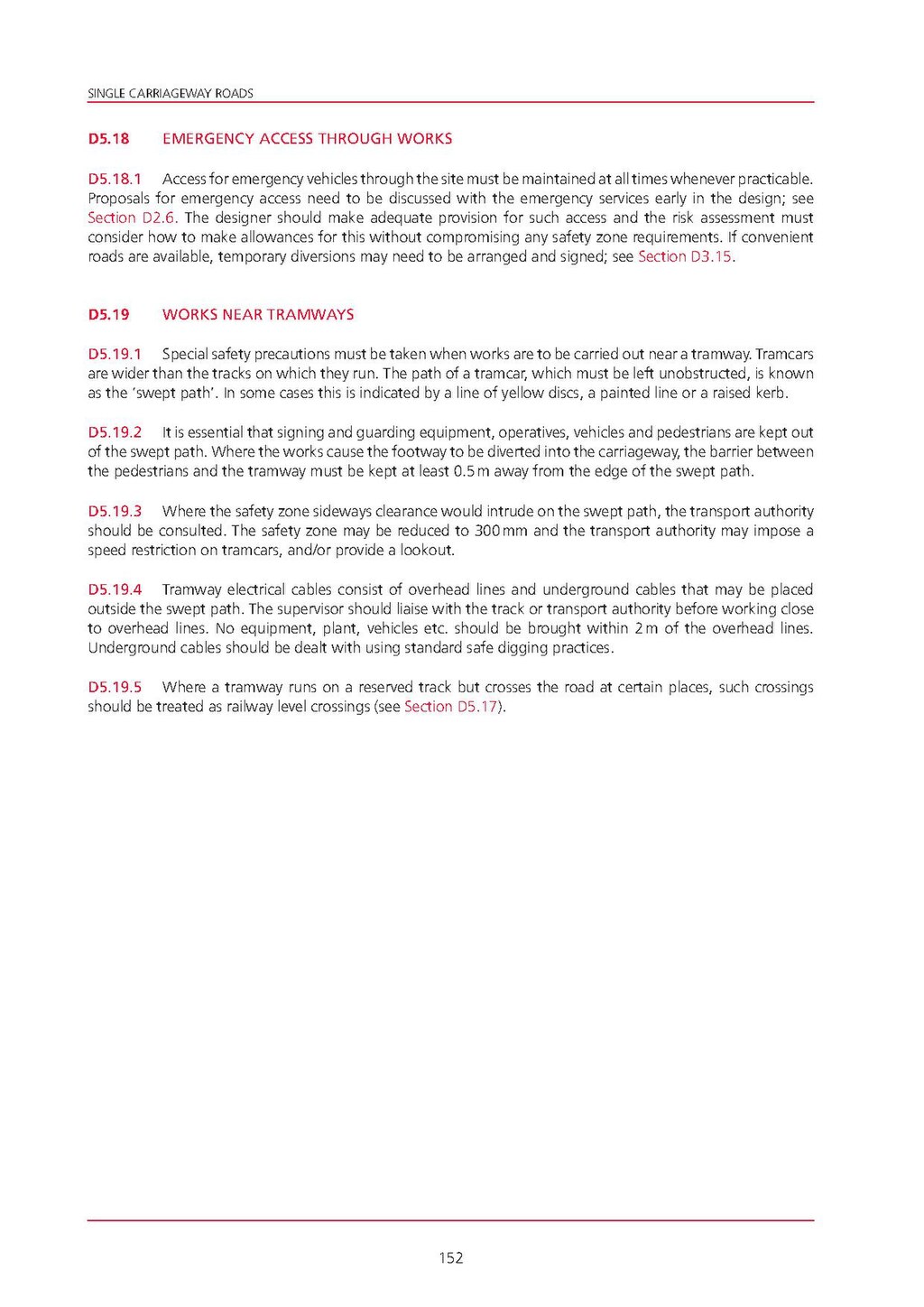D5.18EMERGENCY ACCESS THROUGH WORKS
D5.18.1 Access for emergency vehicles through the site must be maintained at all times whenever practicable. Proposals for emergency access need to be discussed with the emergency services early in the design; see Section D2.6. The designer should make adequate provision for such access and the risk assessment must consider how to make allowances for this without compromising any safety zone requirements. If convenient roads are available, temporary diversions may need to be arranged and signed; see Section D3.15.
D5.19WORKS NEAR TRAMWAYS
D5.19.1 Special safety precautions must be taken when works are to be carried out near a tramway. Tramcars are wider than the tracks on which they run. The path of a tramcar, which must be left unobstructed, is known as the ’swept path’. In some cases this is indicated by a line of yellow discs, a painted line or a raised kerb.
D5.19.2 It is essential that signing and guarding equipment, operatives, vehicles and pedestrians are kept out of the swept path. Where the works cause the footway to be diverted into the carriageway, the barrier between the pedestrians and the tramway must be kept at least 0.5 m away from the edge of the swept path.
D5.19.3 Where the safety zone sideways clearance would intrude on the swept path, the transport authority should be consulted. The safety zone may be reduced to 300mm and the transport authority may impose a speed restriction on tramcars, and/or provide a lookout.
D5.19.4 Tramway electrical cables consist of overhead lines and underground cables that may be placed outside the swept path. The supervisor should liaise with the track or transport authority before working close to overhead lines. No equipment, plant, vehicles etc. should be brought within 2m of the overhead lines. Underground cables should be dealt with using standard safe digging practices.
D5.19.5 Where a tramway runs on a reserved track but crosses the road at certain places, such crossings should be treated as railway level crossings (see Section D5.17).
152
